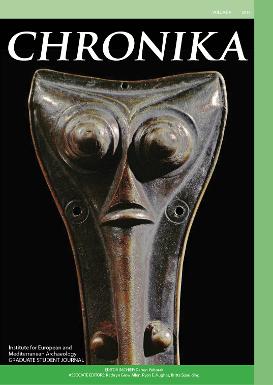The Theoretical Roman Archaeology Conference (TRAC) Standing Committee and TRAC 2016 Local Organising Committee are pleased to announce the Call for Papers for the 26th annual Theoretical Roman Archaeology Conference (TRAC 2016), which will be held in Rome, Italy from 16-19 March 2016. Please see full details below or on the TRAC website at: http://trac.org.uk/conferences/trac2016/
Please share this message with your colleagues, friends, staff members, students, etc.
Deadline: 18 December 2015

Call for Papers: full details |
|
Proposals for papers are invited for the TRAC general session(s) or for one of the accepted thematic sessions. Paper proposals should be no longer than 300 words, and must clearly indicate the intended session(s) for which the paper is proposed. Limited space is available in the thematic sessions, so if a thematic session is oversubscribed, submitted papers will also be considered for the general session(s). The deadline for proposals is 18 December, 2015.
Paper proposers should note the following: • Presentations should last no longer than 30 minutes • Speakers should leave sufficient time at the end of their papers for questions from the audience • The official conference languages are English and Italian • Unfortunately, TRAC cannot cover the costs of speakers’ travel and accommodation to attend the Conference (a limited number of bursaries will be available through separate schemes by competitive application; details will be made available on the joint RAC/TRAC 2016 conference registration website when this goes live) • This is a participative conference where more than half the delegates are speaking, so all delegates are expected to pay the conference fee. This helps keep the fees as low as possible and also maximises participation and engagement. Proposals for papers must include the following information: • Title of the Paper • Name, affiliation, postal address and email of the proposer(s) • Title of the themed session in which they would like to offer a Paper (or ‘General’ if outside a themed session) • A short abstract/description of the theme or subject area of the Paper (not more than 300 words) Session organisers should also note the following: • They will need to instruct the speakers included in their original submission to send in their Paper proposals and abstract • Additional Papers are likely to be offered for all sessions. The final list of speakers at the Conference will be decided by session organisers, with advice from the TRAC 2016 Local Organising Committee • TRAC cannot cover the costs of speakers’ travel and accommodation to attend the Conference Proposals should be sent by email to the TRAC 2016 Local Organising Committee: tracrome2016@gmail.com AND to the lead organiser of the session the Paper is intended for. Proposals received after 18 December will not be considered. Please click here for a list of available TRAC 2016 sessions (including contact details for session organisers). |
Thank You. We look forward to seeing your paper proposals!TRAC 2016 Local Organizing Committee |










